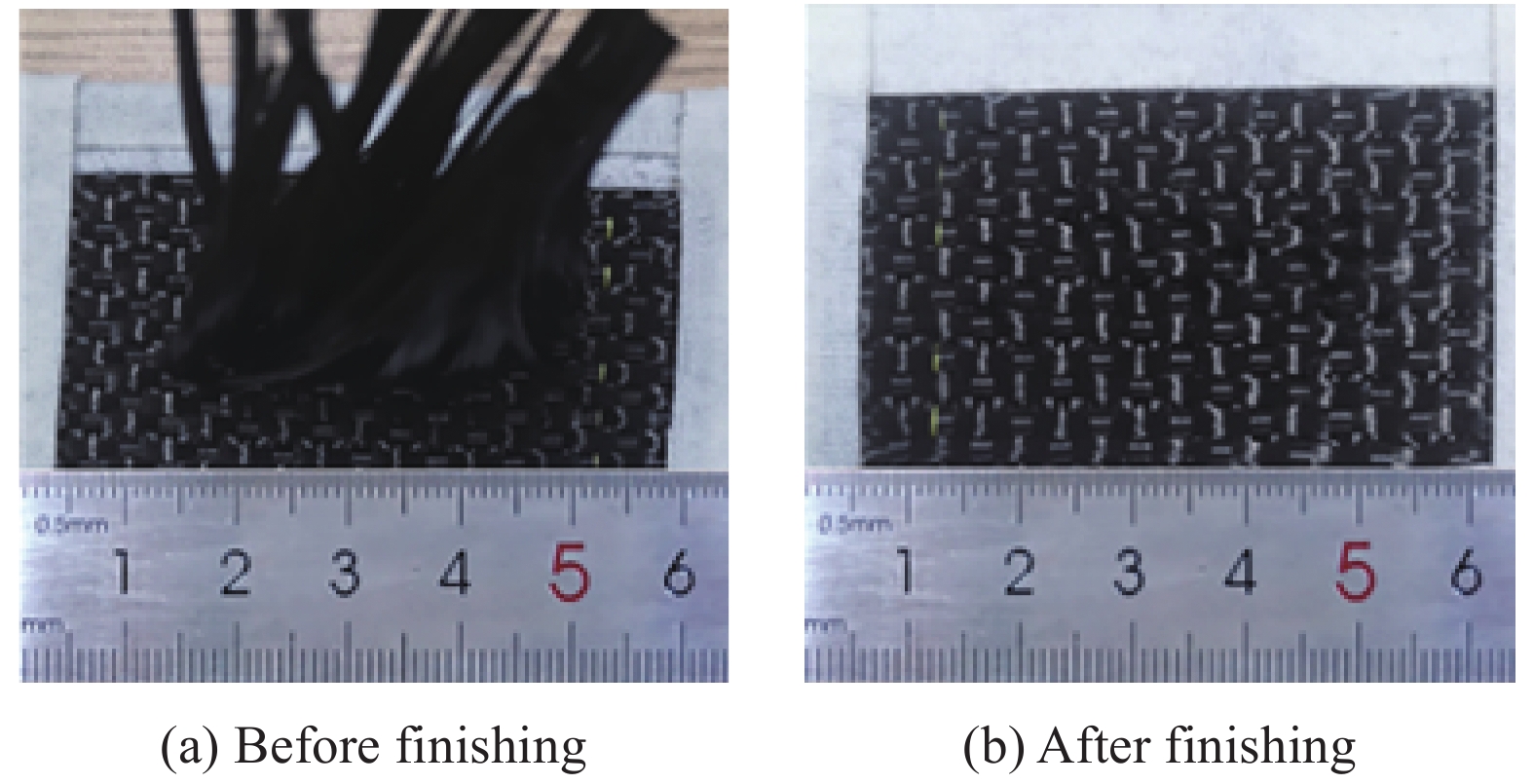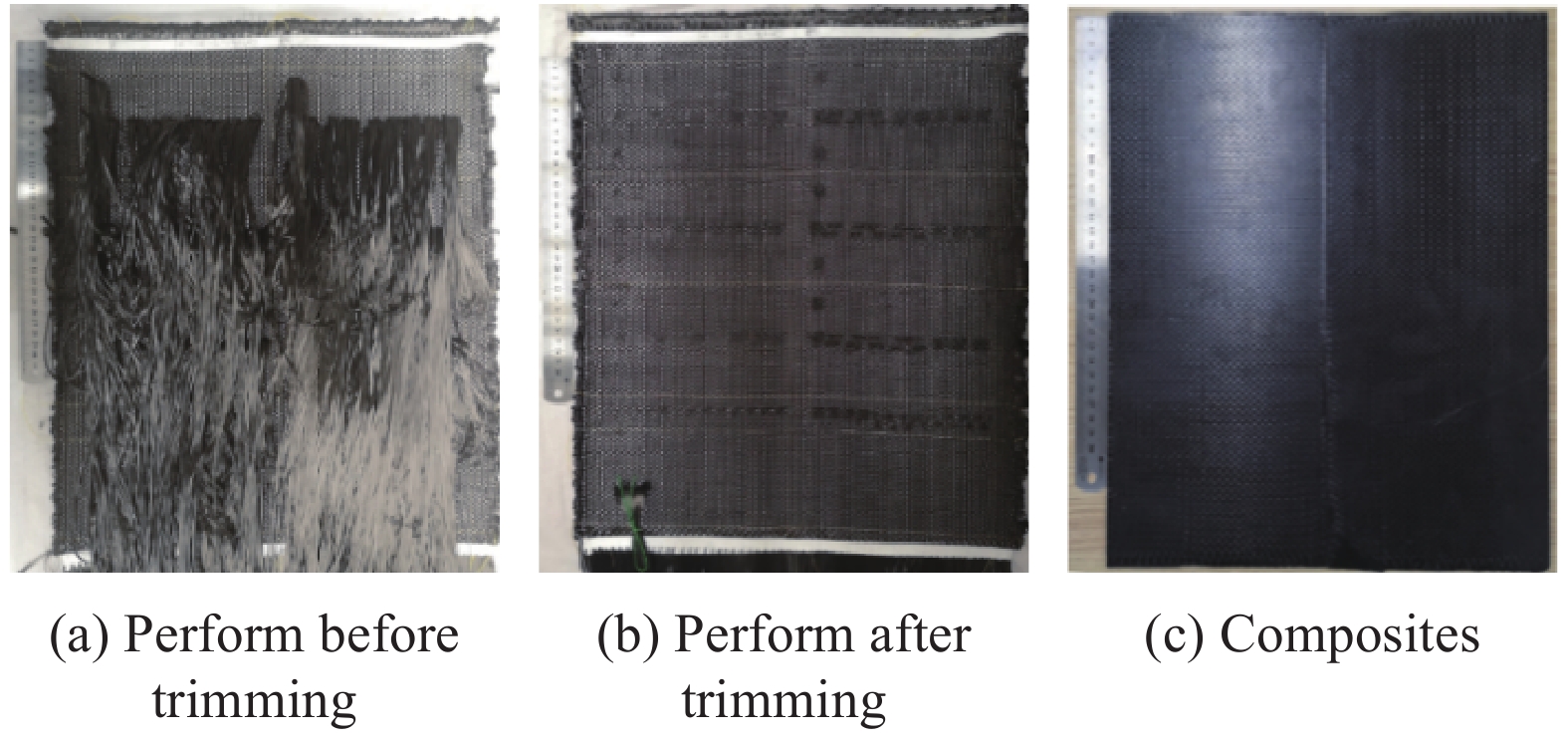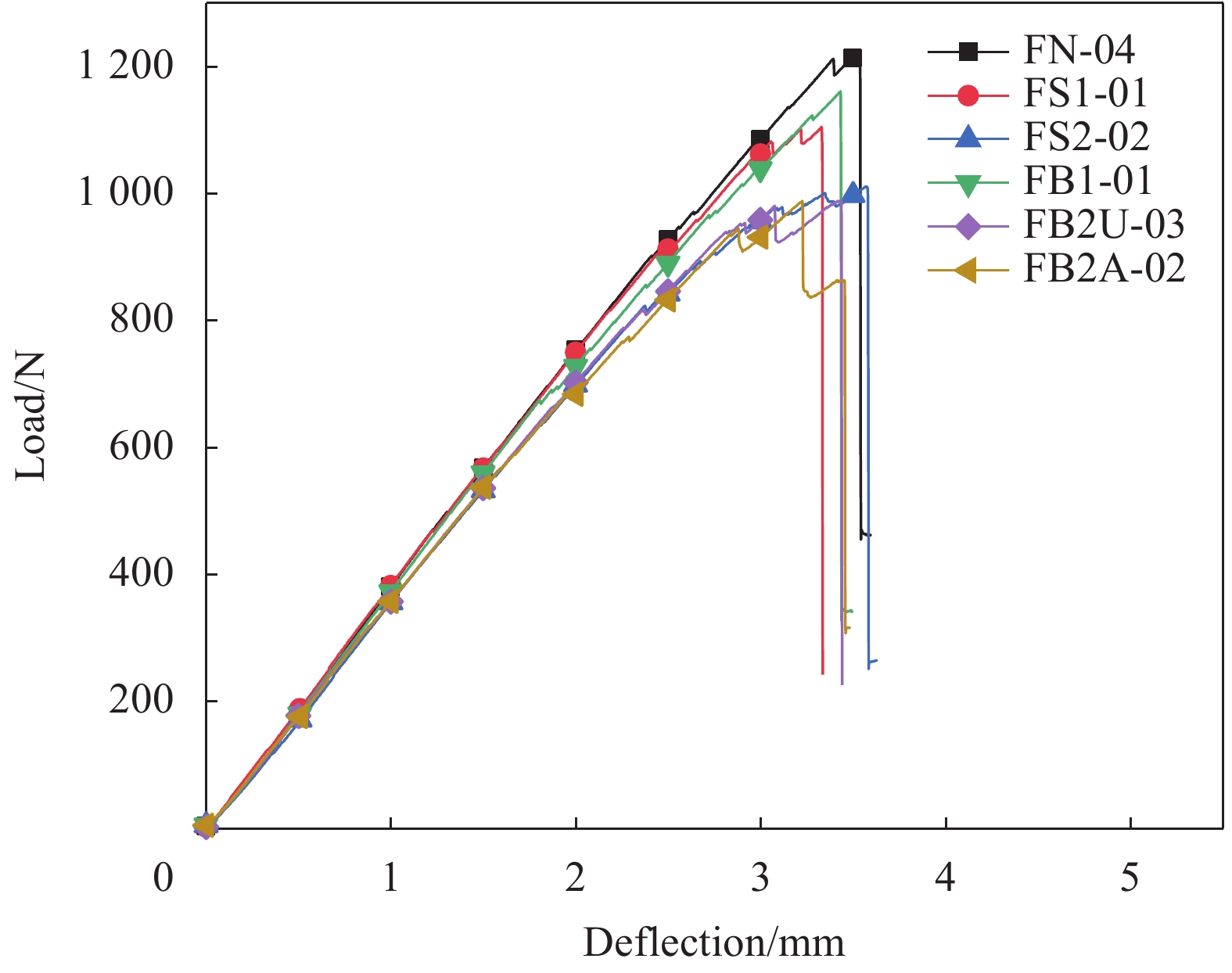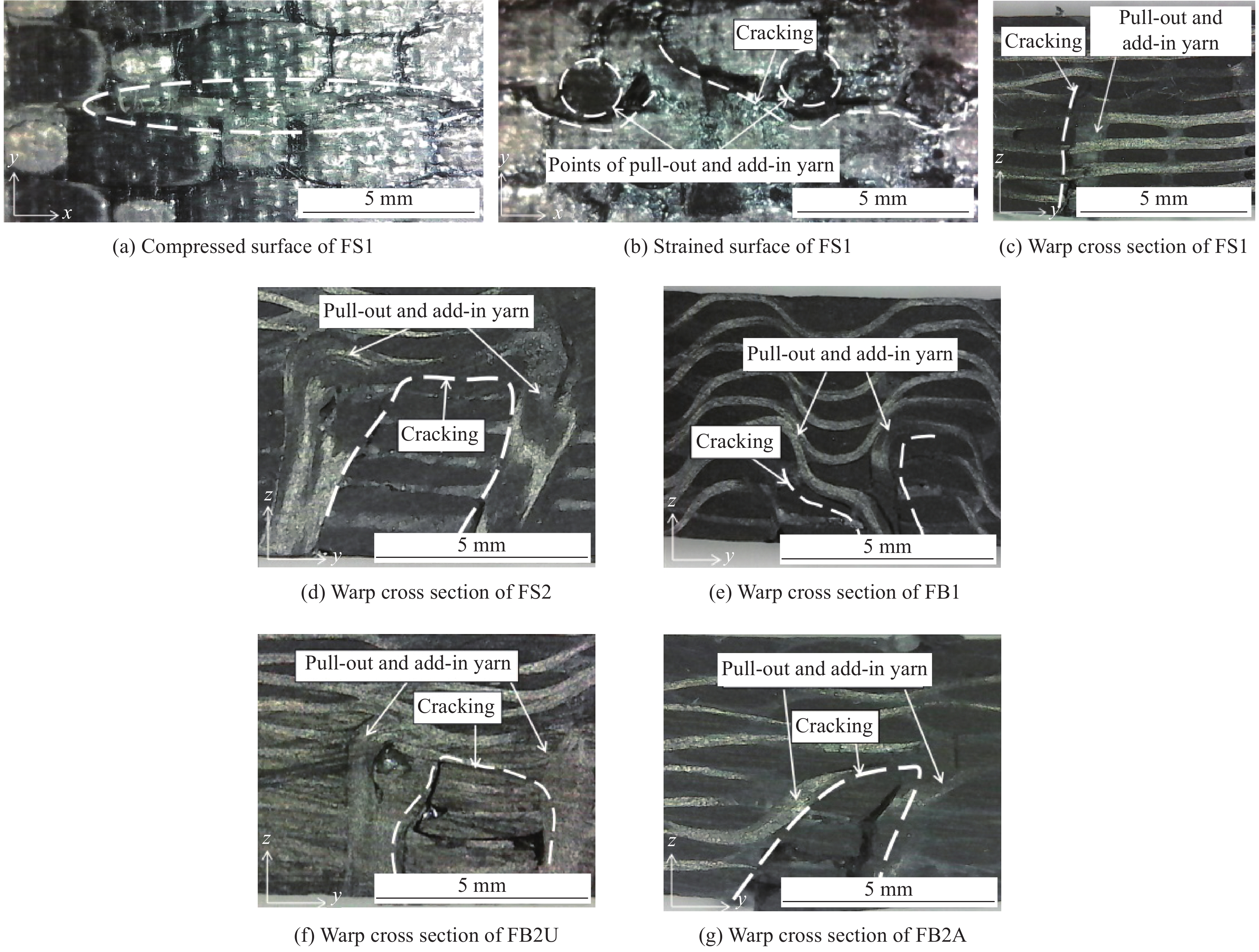Near net-shaped design on the architecture of typical multi-directional 2.5D woven preform
-
摘要: 针对多向异型复合材料构件用3D整体预制体,基于衬经2.5D机织结构,提出5种近净形转向仿形编织工艺,设计并制备了具有典型引纱加纱结构的板条状预制体试样。采用计算机断层扫描法(Micro-CT),观测各系统纱线横截面形态变化和纱线取向分布规律,发现引出加入的纱线沿织物厚度方向挤紧状态发生改变,其横截面从椭圆形变成梯形,又变为三角形,经纱被引出和加入会造成与其接触的纬纱横截面变化。结合复合材料构件的实际承载工况,对具有5种引纱加纱结构的复合材料试样进行了经向抗弯性能测试,结果表明,复合材料的弯曲强度和弯曲模量保持率分别达到82.6%~95.7%和89.1%~97.9%。可见,立足于满足复合材料力学性能要求,发展预制体的三维整体仿形编织技术,是实现复杂形状复合材料构件材料/结构一体化制造的有效途径。Abstract: According to the 3D integral preform which is used for multidirectional heteromorphic shaped composite parts, the preform sample with typical pulling in and adding in yarn structure was designed and prepared based on the 2.5D woven with warp-stuffer preform. Computed tomography (Micro-CT) was used to observe the morphological changes of the yarn cross-section and the distribution of yarn orientation in each system. The squeezed state of the pulled out and added in yarn changes along the thickness direction of the preform, and the cross-section shape of the pulled out and added in yarn are changed from an ellipse to a trapezoid, and then to a triangle. When the warp yarns are pulled out and added in, the cross-section of the weft yarns in contact with them change. Combining the practical loading condition of the composite parts, 5 kinds of composites with pulling out-adding in yarns were tested by three-point bending in warp direction. The results show that the retention rates of bending strength and modulus of the composites reach 82.6%-95.7% and 89.1%-97.9%, respectively. So, to meet the mechanical performance requirements of the composites, developing the 3D integral shaped braided technology of preforms is the effective approach for realizing the material/structure integrated manufacturing of complex shaped composite parts.
-
Keywords:
- 3D woven /
- 2.5D /
- shaped braided /
- pull-out and add-in yarn /
- Micro-CT /
- yarn architecture /
- bending properties
-
涤纶(PET)纤维具有强度高、耐腐蚀、热塑性好、易洗快干等优点[1-2]。随着经济社会的发展和生活水平提高,人们对纺织品的功能性要求日益提升,具有抗紫外、隔热、自洁性和抗菌性等特性的纺织品被广泛研究[3]。利用光催化剂改性涤纶纤维材料,可以使自然界存在的光能转换成为化学反应所需的能量来产生催化作用,使周围的氧气及水分子激发成具有极强氧化力的自由基,从而到达降解细菌和污染物的效果[4-5]。
抗菌纺织品通常是在纺织品表面负载抗菌剂制备而成,抗菌剂包括无机抗菌剂和有机抗菌剂,其中Ag纳米球(AgNPs)是纺织品中应用最广泛的抗菌整理剂。然而,AgNPs涂层不能在AgNPs与纤维表面之间形成共价键,且AgNPs具有一定的毒性[6]。另一方面,有机抗菌剂也存在微生物非靶效应、环境毒性、耐久性差等缺点[7]。
近年来,光催化剂产品因其生态友好性受到更多的关注。在众多光催化剂中,纳米TiO2光催化剂具有较长的研究历史[8]。纳米TiO2因其杰出的光催化活性、无毒性、生物可相容性被广泛应用于功能化纺织品领域。但纳米TiO2的禁带宽度为3.2 eV[9],对可见光利用率较低。
半导体元素掺杂改性TiO2来构成异质结光催化剂成为研究热点,半导体掺杂改性是由n型半导体TiO2元素和p型半导体复合形成p-n异质结,形成电势差,以此在催化剂自身电场作用下分离光生电子和空穴。n型半导体TiO2也可以和其他n型半导体复合,利用载流子在不同带隙之间的转移作用提高光催化活性[10]。
Se是一种重要的p型半导体,其能带隙约为1.7 eV。同时,Se也是一种很好的抗氧化剂,具有防潮性,其性能优于带隙相似的金属硫化物和硒化物。Se在光催化和废水处理领域有着广泛的应用[11]。除此之外,Se纳米粒子(SeNPs)修饰的二氧化钛纳米管具有抗菌和抗炎特性被研究和报道[12]。结果表明,Se纳米颗粒增强了二氧化钛纳米管的抗菌性能,使革兰氏阳性菌和革兰氏阴性菌的菌落减少。因此,Se@TiO2异质结的构建具有重要的研究价值[13],Se纳米材料的宽光谱响应对提高TiO2光催化性能具有重要意义。但是,目前还没有关于Se@TiO2光催化材料在功能性纺织品领域的应用。
本文采用等离子体技术对涤纶针织物进行表面预处理,在涤纶表面负载纳米TiO2,然后通过分子组装法在TiO2/PET表面生长Se纳米球(SeNPs)和Se纳米线(SeNWs),在涤纶表面构筑Se@TiO2二元复合结构。探索纳米Se粒子晶型对涤纶表面光催化性能及抗菌性能的影响及整理后涤纶的表面形貌、化学构成、润湿性能等的变化规律。
1. 实验材料及方法
1.1 原材料
织物:涤纶针织物,克重为 230 g/m2,江苏旷达科技集团股份有限公司。
TiO2(分析纯,上海阿拉丁生化科技有限公司)、无水乙醇(分析纯,上海润捷化学试剂有限公司)、丙酮(分析纯,上海凌峰化学试剂有限公司)、亚甲基蓝(分析纯,上海阿拉丁生化科技有限公司)。亚硒酸钠(99%,Alfa Aesar化学试剂)、抗坏血酸(分析纯,上海源叶生物科技有限公司)、葡萄糖(分析纯,北京伊诺凯科技有限公司)。
营养肉汤、营养琼脂(生物试剂,上海博微生物科技有限公司);大肠杆菌、金黄色葡萄球菌(上海鲁微科技有限公司)。
1.2 实验方法
1.2.1 试样预处理
乙醇、丙酮、去离子水1∶1∶1混合,室温下超声30 min,充分混合。将10 cm×10 cm的涤纶针织物置于混合溶液中,水浴振荡2 h,取出涤纶针织物,用离子水洗去溶液,置于烘箱中60℃烘干备用。
1.2.2 等离子体处理
将烘干后的涤纶针织物置于等离子清洗机(PDC-VCG-2,HARRICK PLASMA)的腔室内,打开真空泵,接入空气,处理2 min。等离子体电源电压为220 V,频率为50 Hz,处理功率为18 W。
1.2.3 纳米TiO2负载
配制2 g/L的TiO2悬浊液,超声分散30 min。将经过等离子体预处理的涤纶针织物置于分散的悬浊液中,60℃水浴振荡2 h,取出涤纶针织物,去离子水洗去表面未附着的TiO2纳米颗粒,60℃烘干备用。
1.2.4 制备SeNPs@TiO2/PET
配制3 mmol/L的Na2SeO3溶液,磁力搅拌30 min。配制C6H8O6溶液,使C6H8O6和Na2SeO3的摩尔比为6∶1,将C6H8O6溶液磁力搅拌30 min。磁力搅拌结束后,将C6H8O6溶液与Na2SeO3溶液混合,60℃下水浴振荡2 h,将经过等离子体和纳米TiO2整理后涤纶针织物按照浴比1∶50置入振荡好的溶液中,60℃浸渍振荡2 h,60℃烘干备用。
1.2.5 制备SeNWs@TiO2/PET
将0.52 g的Na2SeO3和2 g的C₆H₁₂O₆溶解在320 mL的去离子水中。在剧烈磁力搅拌下混合20 min,将混合溶液放入反应釜中85℃反应4 h。随后,通过离心收集产物,并用去离子水洗涤数次以去除杂质。将砖红色产物分散到无水乙醇中陈化4 h形成黑灰色固体。
将黑灰色固体烘干,加入50 mL去离子水,超声分散30 min,将经过等离子体和纳米TiO2整理后涤纶针织物按照浴比1∶50置入溶液中,60℃水浴振荡2 h,60℃烘干备用。
1.3 测试与表征
1.3.1 扫描电镜和EDS分析
采用扫描电镜(ZEISS Gemini SEM 300,加速电压5 kV)对材料的表面形态进行观察。
采用X 射线能谱仪(型号JSM-6510,日本JEOL公司)对材料表面进行元素成分分析,利用不同元素的 X 射线光子特征能量的不同来进行元素成分分析。
1.3.2 X射线衍射分析(XRD)
使用X射线衍射仪(XRD,型号H-12,日本理学,扫描角度10°~80°)对材料的晶相结构进行分析。
1.3.3 X射线光电子能谱分析(XPS)
使用X射线光电子能谱仪(XPS,型号K-Alpha,美国Thermo Fisher Scientific公司,测试元素:C、Ti、O、Se)来分析材料表面的元素种类、化学组成及有关电子结构的信息。
1.3.4 亲水性测试
采用接触角测量仪(SDC-350,东莞晟鼎精密仪器有限公司)测量静态接触角和吸水时间,液滴大小为3 μL,记录液滴接触样品到完全浸润的时间,由此评估样品的亲水性能。根据杨氏-拉普拉斯方程测量接触角值,并采用轮廓拟合算法完成。
1.3.5 光催化性能测试
采用功率 300 W 的氙灯(PLS-SXE300+,北京泊菲莱科技有限公司)模拟太阳光,以30 mg/L的亚甲基蓝为有机污染物模型。
按照下式计算降解率:
η=C0−CC0×100% (1) 式中:η为光催化降解率(%);C0为亚甲基蓝初始吸光度值;C为亚甲基蓝经过降解后的吸光度值。
1.3.6 抗菌性能测试
根据标准 FZ/T 73023—2006 [14]中振荡法来对材料的抗菌性能进行测试。测试菌种为革兰氏阳性菌金黄色葡萄球菌和革兰氏阴性菌大肠杆菌。首先准备接种菌液,在37℃±1℃下,培养 20~24 h;再将培养好的菌液接种到试样上,以 24℃±1℃、150 r/min振荡 18 h;将菌液稀释在营养琼脂培养基中,以37℃±1℃培养 24 h;最后选取菌落数30~300之间的培养皿计数。
按照下式计算抑菌率:
Y=Wa−WbWa×100% (2) 式中:Y为试样抑菌率(%);Wa为标准空白试样振荡18 h后烧瓶内的活菌浓度(CUF/mL);Wb为抗菌试样振荡接触18 h后烧瓶内的活菌浓度(CUF/mL)。
2. 结果与讨论
2.1 Se@TiO2/PET复合光催化材料的表面形貌
图1(a)是SeNPs@TiO2/PET的扫描电镜图,图中可以看出Se纳米颗粒与TiO2纳米颗粒均呈球形,均匀分散在PET纤维表面。图1(b) 为SeNWs@TiO2/PET的扫描电镜图,PET纤维表面均匀分散着TiO2球状纳米颗粒和Se纳米线。图1(c)是SeNPs的扫描电镜图片,粒径约在700~800 nm之间。图1(d)是SeNWs的扫描电镜图片,图中SeNWs的直径约200 nm,纵向长度达到10 μm,SeNWs的生成是由于随着溶液浓度和反应温度的升高,Se的还原速度加快,其晶型开始发生变化,起初合成的α-Se转化成t-Se,体系中的晶核较多,α-Se 沿着 t-Se 晶核的c轴生长,从而导致SeNWs的生成[15]。
图2为PET、SeNPs@TiO2/PET及SeNWs@TiO2/PET的表面各元素分布图,表1为材料表面各元素的相对含量,PET针织物表面的C元素和O元素相对含量为67.79wt%和32.21wt%,而SeNPs@TiO2/PET和SeNWs@TiO2/PET因引入Ti元素和Se元素,表面的C元素和O元素相对含量有所下降,Ti元素和Se元素都均匀分布在PET针织物表面。其中Ti元素来自于TiO2纳米颗粒,Se元素的存在证明Se纳米颗粒成功负载到PET针织物表面。
表 1 Se@TiO2/PET材料表面各元素的相对含量Table 1. Relative content of elements on the surface of Se@TiO2/PET materialsSample Relative content of element/wt% C O Ti Se PET 67.79 32.21 − − SeNPs@TiO2/PET 60.83 37.47 0.69 1.01 SeNWs@TiO2/PET 61.44 34.82 2.83 0.91 2.2 Se@TiO2/PET复合光催化材料的结晶结构分析
PET、SeNPs@TiO2/PET和SeNWs@TiO2/PET材料结晶结构如图3所示,3条曲线在17.2°出现的衍射峰为涤纶的衍射峰,涤纶的XRD衍射谱型与文献[16]所述一致。TiO2/PET在25.2°、37.5°、47.8°、53.5°、62.3°这5个位置出现了衍射峰。这些衍射峰对应 PDF#71-1168中的(101)、(004)、(200)、(105)、(204)晶面,为锐钛矿型TiO2的衍射峰[17]。在SeNPs@TiO2/PET的曲线中同时出现涤纶的衍射峰和锐钛矿型TiO2的衍射峰,但无定形Se的XRD衍射峰为一个宽广的峰[15, 18],因此在SeNPs@TiO2/PET曲线中不明显展现。在SeNWs@TiO2/PET的曲线中,除了出现锐钛矿相TiO2的衍射峰之外,在23.5°、29.7°出现的衍射峰与PDF卡片#06-0362中的(100)、(101)晶面相对应,其晶胞参数a=b=0.43662 nm,c=0.49536 nm。由此可得产物为三方相Se[19]。
2.3 Se@TiO2/PET复合光催化材料的元素组成分析
图4是TiO2/PET和Se@TiO2/PET的XPS全谱图,图4(a)是TiO2/PET和Se@TiO2/PET的全峰,TiO2/PET包含C1s轨道、O1s轨道和Ti2p轨道,而Se@TiO2/PET包含C1s轨道、O1s轨道、Ti2p轨道和Se3d轨道。其中C元素和O元素的峰主要来自PET针织物[20],图4(b)为C1s的结合能,图中两条曲线出现的峰值分别对应PET中的O—C=O键、C—O—C键和C—C键。图4(c)为Ti元素的谱图,TiO2/PET在463.33 eV和457.73 eV出现的峰分别表示的是Ti2p1/2及Ti2p3/2轨道,两轨道间结合能相差5.6 eV,说明材料中存在Ti4+[21]。进行Se掺杂后,电子从 Ti4+向Se0转移,Ti2p1/2和Ti2p3/2轨道向高结合能方向偏移[22]。由于Se的电负性(2.55)高于Ti的电负性(1.54),Se占据TiO2中Ti4+的位置后,电子会从Ti4+转移到Se0,因此TiO2原子核周围的电子云密度降低,结合能升高。因此Ti2p结合能的偏移表明Se掺杂进TiO2晶格中,并以Ti—O—Se的形式存在[23]。图4(d)为O1s轨道的图谱,在531.52 eV和531.48 eV出现的峰为来自于样品中的 O2–,说明 Se@TiO2/PET 复合光催化剂中 O主要以负二价的形式存在。图4(e)为Se元素图谱,在55.13 eV出现的峰为Se3d5/2轨道,55.99 eV处出现的峰为Se3d3/2轨道,这两处结合能均为单质Se[24]。XPS的结果分析表明TiO2和Se单质已经成功负载在PET针织物表面。
2.4 Se@TiO2/PET复合光催化材料的荧光光谱分析
图5为PET、SeNPs@TiO2/PET及SeNWs@TiO2/PET的光致发光光谱图,光致发光信号是光生电子和空穴复合的结果,它可以表征半导体中光生载流子的分离和复合的信息[25-26]。当电子-空穴对的分离率提高时,光催化性能就会加强,从图5中可以看出,与PET相比,SeNPs@TiO2/PET的荧光光谱谱型没有明显变化,且没有新的峰产生,但是光致发光强度有所降低,而SeNWs@TiO2/PET的光致发光强度显著下降甚至消失,表明SeNWs@TiO2/PET在光催化过程中电子/空穴的复合效率降低,其原因可能为沉积在TiO2表面的Se能够捕获光生电子[27],阻碍电子-空穴对的复合,从而提高复合材料的光催化性能。
2.5 Se@TiO2/PET复合光催化材料的紫外吸收光谱分析
图6(a)显示了不同材料的紫外-可见吸收光谱,与PET相比,SeNPs@TiO2/PET和SeNWs@TiO2/PET在整个光谱的吸收峰都有增强,且在可见范围内的吸光性能有大幅跃升。SeNPs@TiO2/PET和SeNWs@TiO2/PET的光学吸收带边出现红移,对可见光的利用范围得到极大提升,这是由于 SeNPs@TiO2/PET和SeNWs@TiO2/PET中导带和价带发生了变化[28]。
光电效应公式如下[29]:
(αhν)2=A(hν−Eg) (3) 其中:A是常数;α是光吸收系数;h是普朗克常数;ν是光频率;Eg是材料的禁带宽度。图6(b)绘制了(αhν)2与hν之间的关系图,并将图的线性部分外推到能量轴,以确定能带隙。SeNPs@TiO2/PET和SeNWs@TiO2/PET的相对禁带宽度分别为2.8 eV和2.7 eV。SeNPs@TiO2/PET和SeNWs@TiO2/PET的带隙变窄,这就使材料对光的吸收率变高,从而能提高织物的光催化性能。
2.6 Se@TiO2/PET复合光催化材料的表面润湿性能分析
通过静态水接触角测试,测定了PET、SeNPs@TiO2/PET和SeNWs@TiO2/PET复合材料的表面润湿性。图7为PET、SeNPs@TiO2/PET和SeNWs@TiO2/PET的静态接触角示意图,3种复合材料的接触角如表2所示,PET接触角为126.4°,呈疏水状态。SeNPs@TiO2/PET和SeNWs@TiO2/PET的接触角为0°,两种复合材料表面均呈现亲水状态。
表 2 Se@TiO2/PET材料的接触角及吸水时间Table 2. Contact angle and water absorption time of materialsSample Contact angle Water
absorption timePET 126.4° n/a SeNPs@TiO2/PET 0° >1 s SeNWs@TiO2/PET 0° >1 s Note: n/a denotes not applicable. 2.7 Se@TiO2/PET材料的光催化性能分析
模拟太阳光照射下,SeNPs@TiO2/PET和SeNWs@TiO2/PET对亚甲基蓝溶液的降解效率如图8所示,样品置于黑暗环境下磁力搅拌30 min,认为此时催化剂和亚甲基蓝溶液已达到吸附平衡。在无任何光催化材料的环境下,亚甲基蓝溶液几乎没有降解。加入PET后,经氙灯照射,亚甲基蓝的降解率没有发生明显变化。TiO2/PET经过90 min照射后,对亚甲基蓝的降解率仅为73.9%。而SeNPs@TiO2/PET和SeNWs@TiO2/PET在氙灯照射90 min后,对亚甲基蓝的降解率可达97.3%和98.3%。两种材料均表现出优异的光催化活性,SeNWs@TiO2/PET的催化效率更高,这是由于Se纳米线结构的单晶度,它可以促进内部电荷载流子转移[30],TiO2也有过类似报道,由于界面电荷转移速率的提高,纳米棒的光催化活性高于纳米球[31]。
为了进一步证明SeNPs@TiO2/PET和SeNWs@TiO2/PET两种复合光催化材料的显著光催化性能,对图8中使用的SeNPs@TiO2/PET和SeNWs@TiO2/PET进行回收、洗涤和干燥。然后对烘干后的SeNPs@TiO2/PET和SeNWs@TiO2/PET在相同的条件下进行3次循环光催化降解亚甲基蓝实验,所得结果如图9所示。SeNPs@TiO2/PET和SeNWs@TiO2/PET在亚甲基蓝光降解过程中反复使用和回收3次后,其光催化活性没有明显的衰减,依然保持在90%以上。
2.8 Se@TiO2/PET复合光催化材料的抗菌性能分析
SeNPs@TiO2/PET和SeNWs@TiO2/PET对大肠杆菌和金黄色葡萄球菌的抑菌图如图10所示。表3中,TiO2/PET对大肠杆菌和金黄色葡萄球菌的抑菌率较低,分别为59.19%和91.16%,在黑暗条件下,TiO2也会对细菌产生毒性作用,推测可能与光催化起始前的平衡相有关[32-33]。而SeNPs@TiO2/PET和SeNWs@TiO2/PET对金黄色葡萄球菌的抑菌率均可达到99.99%,对大肠杆菌的抑菌率,分别为92.03%和94.68%。由于硒纳米颗粒和TiO2在生理pH下带负电,因此对带负电的大肠杆菌膜具有排斥作用[34]。Se元素的引入增强了复合材料的抗菌性能。SeNPs@TiO2/PET和SeNWs@TiO2/PET对大肠杆菌的抑菌率普遍低于金黄色葡萄球菌,由于在革兰氏阳性细菌中,如金黄色葡萄球菌,其细胞壁结构不同,具有较厚的肽聚糖膜,而没有任何外部脂多糖膜。因此,Se通过化学吸附更容易渗透到金黄色葡萄球菌中[35]。
表 3 SeNPs@TiO2/PET和SeNWs@TiO2/PET对大肠杆菌和金黄色葡萄球菌的抑菌率Table 3. Antibacterial rates of SeNPs@TiO2/PET and SeNWs@TiO2/PET against E. coli and S. aureusSample E. coli colony/
(CFU·mL−1)Bacteriostatic rate/% S. aureus colony/(CFU·mL−1) Bacteriostatic
rate/%Blank 1.73×106 n/a 0.95×106 n/a TiO2/PET 7.06×105 59.19 0.84×105 91.16 SeNPs@TiO2/PET 1.38×105 92.03 1 99.99 SeNWs@TiO2/PET 0.92×105 94.68 1 99.99 3. 结 论
采用等离子体技术对涤纶针织物进行预处理,在涤纶针织物表面负载纳米TiO2,后通过分子组装法在TiO2/PET表面生长Se纳米球(SeNPs)和Se纳米线(SeNWs),制备了SeNPs@TiO2/PET和SeNWs@TiO2/PET复合光催化材料。
(1)扫描电镜和EDS结果表明生成的SeNPs和SeNWs与TiO2成功结合并均匀地负载在涤纶针织物表面。XRD结果表明生成的SeNPs的晶型为无定形Se即α-Se,SeNWs为t-Se,XPS结果表明涤纶针织物表面生成的为Se单质(Se0)。
(2) PL分析表明p型半导体Se与n型半导体TiO2复合形成p-n异质结,产生电势差,在催化剂自身电场作用下分离光生电子和空穴。UV-vis分析表明,SeNPs@TiO2/PET和SeNWs@TiO2/PET两种材料的吸光性能均在可见光范围内有大幅度跃升。
(3)光催化结果表明模拟太阳光条件下,经过90 min降解,SeNPs@TiO2/PET和SeNWs@TiO2/PET对亚甲基蓝溶液的降解效率均可达到95%以上。
(4)抗菌结果表明SeNPs@TiO2/PET和SeNWs@TiO2/PET两种材料对金黄色葡萄球菌抗菌性能均可达到99%,对大肠杆菌的抑菌率可达90%以上。
-
表 1 衬经2.5D机织预制体结构参数
Table 1 Structure parameters of 2.5D woven with warp-stuffer preforms
Weft density/(picks/cm/layer) Stuffer warp density/(ends/cm/layer) Binder warp density/(ends/cm/layer) Vf/% Designed Measured Designed Measured Designed Measured Designed Measured 3.5±0.1 3.6 3.0±0.1 3.0 3.0±0.1 3.0 55±3 52 Note: Vf—Fiber volume fraction. 表 2 引纱加纱方案
Table 2 Pull-out and add-in yarn schemes
No. Nomination Description 1 S1 Pull-out a stuffer warp, add-in a new stuffer warp 2 S2 Pull-out a stuffer warp, add-in a new stuffer warp, weaving one weft, pull-out the new stuffer warp, add-in a new stuffer warp again 3 B1 Pull-out a binder warp, add-in a new binder warp 4 B2U Pull-out the binder warp from under the weft to be weaved, add-in a new binder warp, weaving one weft, pull-out the new binder warp, add-in a new binder warp again 5 B2A Pull-out the binder warp from above the weft to be weaved, add-in a new binder warp, weaving one weft, pull-out the new binder warp, add-in a new binder warp again Notes: S—Stuffer warp; B—Binder warp; U and A—Pulling out the binder warp from under and above the weft to be weaved. 表 3 衬经2.5D机织引纱加纱复合材料弯曲试样参数
Table 3 Structure parameters of bending 2.5D woven with warp-stuffer composite containing pull-out and add-in yarn samples
Sample FN FS1 FS2 FB1 FB2U FB2A Pulling-out stuffer warp/(numbers/time) − − − 4 4 4 Pulling-out binder warp/(numbers/time) − 4 4 − − − Repeat pulling-out yarns/numbers − − 8 − 8 8 Notes: F—Flexural; N—No yarns are pulled-out or added-in. 表 4 衬经2.5D机织预制体结构纱线参数测量值
Table 4 Measured values of yarn parameters of 2.5D woven with warp-stuffer preforms
Measured Weft Stuffer warp Binder warp Crimp angle/(°) 10.63±2 0 29.33±2 Cross-sectional area/mm2 0.71±0.02 0.34±0.02 0.33±0.02 Fill factor 0.63±0.04 0.66±0.04 0.68±0.04 表 5 5种引纱加纱方案中转折角测量值
Table 5 Measured values of steering angles in 5 kinds of pull-out and add-in yarn schemes
Steering angle/(°) S1 S2 B1 B2U B2A Pull-out yarn a 63.39±5 65.60±5 37.48±5 69.72±5 38.14±5 Add-in yarn b 63.77±5 67.01±5 69.08±5 67.19±5 67.14±5 Pull-out yarn b - 68.02±5 - 65.19±5 66.14±5 Add-in yarn c - 64.40±5 - 69.12±5 39.14±5 表 6 衬经2.5D机织复合材料试样弯曲性能
Table 6 Bending properties of 2.5D woven with warp-stuffer composite samples
Sample Maximum load/N Bending strength/MPa Bending modulus/GPa Warp-wise CV/% Warp-wise CV/% Retention/% Warp-wise CV/% Retention/% FN 1246.25 2.46 418.53 2.33 100.0 33.25 2.80 100.0 FS1 1090.24 4.67 375.70 4.35 89.8 30.51 2.30 91.8 FS2 1033.13 3.13 351.26 3.11 83.9 29.63 2.99 89.1 FB1 1179.06 6.27 400.88 6.28 95.7 32.52 3.08 97.9 FB2U 1016.75 4.42 345.70 4.42 82.6 30.49 2.93 91.7 FB2A 1035.78 5.11 352.17 5.23 84.1 30.29 2.44 91.1 Notes: CV—Coefficient of variation in bending strength. -
[1] OUYANG Y, SUN B, GU B. Finite element analyses on bending fatigue of three-dimensional five-directional braided composite T-beam with mixed unit-cell model[J]. Journal of Composite Materials,2017,52(9):1139-1154.
[2] LI D. Micro-structural analysis of three dimensional braided composites with profiled section[J]. Journal of Beijing University of Aeronautics and Astronautics,2007,33(6):714-718.
[3] TONG L, MOURITZ A P, BANNISTER M K. 3D Fibre reinforced polymer composites[M]. Amsterdam: Elsevier, 2002.
[4] 刘丽芳, 郑义珠, 阎建华. 一种曲线式变截面台阶板的三维编织方法: 中国, CN102926128A[P]. 2013-02-13. LIU Lifang, ZHENG Yizhu, YAN Jianhua. The invention relates to a three-dimensional braiding method of curvilinear variable section step plate: China, CN102926128A[P]. 2013-02-13(in Chinese).
[5] 李嘉禄, 陈利, 焦亚男. 变截面预成型制件的三维编织方法及其制件: 中国, CN1651627[P]. 2005-08-10. LI Jialu, CHEN Li, JIAO Ya’nan. Three-dimensional braiding method for variable-section preformed parts and its parts: China, CN1651627[P]. 2005-08-10(in Chinese).
[6] 焦亚男. 三维异型整体编织增减纱理论和工艺研究[D]. 天津: 天津工业大学, 2005. JIAO Ya’nan. Research on the theory and technology of three dimensional heteromorphic integral weaving yarn increase and decrease[D]. Tianjin: Tiangong University, 2005(in Chinese).
[7] BILISIK K, MOHAMED M H. Multiaxis three-dimensional flat woven preform (tube rapier weaving) and circular woven preform (radial crossing weaving)[J]. Textile Research Journal,2009,79(12):1067-1084. DOI: 10.1177/0040517508099395
[8] FAZELI M, HÜBNER M, LEHMANN T, et al. Development of spatially branched woven node structures on the conventional weaving loom[J]. Textile Research Journal,2017,88(13):1453-1465.
[9] FAZELI M, KERN M, HOFFMANN G, et al. Development of three-dimensional profiled woven fabrics on narrow fabric looms[J]. Textile Research Journal,2015,86(12):1328-1340.
[10] CHIU C, CHENG C. Weaving method of 3D woven preforms for advanced composite materials[J]. Textile Research Journal,2003,73(1):37-41. DOI: 10.1177/004051750307300107
[11] ZHENG T, LI S, JING S, et al. Designing of 3D woven integrated T-joint tube[J]. Textile Research Journal,2012,83(11):1143-1155.
[12] SUGUN B S, SANDEEP D N. Integral weaving of orthogonal 3D ‘T’ stiffeners based on pleat weaving concept[J]. Journal of Industrial Textiles,2017,47(7):1626-1644.
[13] CHEN X, TAYLOR L W, TSAI L. An overview on fabrication of three-dimensional woven textile preforms for compo-sites[J]. Textile Research Journal,2011,81(9):932-944. DOI: 10.1177/0040517510392471
[14] 郭兴峰, 彭淑静, 李凤强. 整体T形管道接头预型件的设计[J]. 天津工业大学学报, 2005(2):16-18. DOI: 10.3969/j.issn.1671-024X.2005.02.005 GUO Xingfeng, PENG Shujing, LI Fengqiang. Design of integrated composite T-joint preform[J]. Journal of Tianjin Polytechnic University,2005(2):16-18(in Chinese). DOI: 10.3969/j.issn.1671-024X.2005.02.005
[15] 李嘉禄, 焦亚男, 陈利. 一种可使编织成型方向折转的三维整体编织方法: 中国, CN1827888[P]. 2006-09-06. LI Jialu, JIAO Ya’nan, CHEN Li. The invention relates to a three-dimensional integral braiding method which can make the direction of braiding forming turn: China, CN1827888[P]. 2006-09-06(in Chinese).
[16] 刘丽芳, 耿晓景, 阎建华. 一种圆角异型件的三维编织的净形制备方法: 中国, CN102965836A[P]. 2013-03-13. LIU Lifang, GENG Xiaojing, YAN Jianhua. The invention relates to a clean form preparation method for three dimensional braiding of round corner shaped pieces: China, CN102965836A[P]. 2013-03-13(in Chinese).
[17] 李嘉禄, 焦亚男, 陈利. 一种多向预成型制件的三维整体编织方法: 中国, CN1827887[P]. 2006-09-06. LI Jialu, JIAO Ya’nan, CHEN Li. The invention relates to a three-dimensional integral braiding method for multidirectional preformed parts: China, CN1827887[P]. 2006-09-06(in Chinese).
[18] 刘振国, 阚玉华. 多向预成型编织件及其三维整体编织方法: 中国, CN101586285[P]. 2009-11-25. LIU Zhenguo, KAN Yuhua. Multidirectional preformed braid and its three dimensional integral braid method: China, CN101586285[P]. 2009-11-25(in Chinese).
[19] 陈利, 王心淼, 焦亚男. 一种整体舵增强织物及其编织方法: 中国, CN106987978B[P]. 2019-09-24. CHEN Li, WANG Xinmiao, JIAO Ya’nan. The invention relates to an integral rudder reinforcement fabric and a weaving method: China, CN106987978B[P].2019-09-24(in Chinese).
[20] 孙颖, 陈利, 李嘉禄. 炭/环氧三维多向编织复合材料圆管相贯接头承载有限元分析[J]. 固体火箭技术, 2008(3):266-269. DOI: 10.3969/j.issn.1006-2793.2008.03.016 SUN Ying, CHEN Li, LI Jialu. Finite element analysis on loading properties of intersecting tubular joint with carbon/epoxy 3D multidirectional braided composite[J]. Journal of Solid Rocket Technology,2008(3):266-269(in Chinese). DOI: 10.3969/j.issn.1006-2793.2008.03.016
[21] HONG Y, YAN Y, TIAN Z, et al. Mechanical behavior analysis of 3D braided composite joint via experiment and multiscale finite element method[J]. Composite Structures,2018,208:200-212.
[22] 杨彩云, 杨红娜. 3D机织复合材料卫星桁架接头的抗弯刚度研究[J]. 材料科学与工艺, 2008, 16(6):810-813. YANG Caiyun, YANG Hongna. Study on the bending rigidity of a satellite antenna truss joint made of 3D woven composites[J]. Materials Science and Technology,2008,16(6):810-813(in Chinese).
[23] TAO G Q, LIU Z G, LV M Y, et al. The manufacture and test of advanced composite material flange[J]. Advanced Materials Research,2010,168-170:2606-2610. DOI: 10.4028/www.scientific.net/AMR.168-170.2606
[24] YAN S, ZENG X, LONG A. Effect of fibre architecture on tensile pull-off behaviour of 3D woven composite T-joints[J]. Composite Structures,2020,242:112194. DOI: 10.1016/j.compstruct.2020.112194
[25] UMAIR M, SHAKER K, JAVAID M U, et al. Effect of weaving patterns on damage resistance of 3D woven jointless T and H shaped reinforcements[J]. Mechanics of Advanced Materials and Structures,2020:1-14.
[26] WANG H, WANG Z. Statistical analysis of yarn feature parameters in C/epoxy plain-weave composite using Micro CT with high-resolution lens-coupled detector[J]. Applied Composite Materials,2016,23(4):601-622. DOI: 10.1007/s10443-016-9476-5
[27] DESPLENTERE F, LOMOV S V, WOERDEMAN D L, et al. Micro-CT characterization of variability in 3D textile architecture[J]. Composites Science and Technology,2005,65(13):1920-1930. DOI: 10.1016/j.compscitech.2005.04.008
[28] YAN S, ZENG X, BROWN L, et al. Geometric modeling of 3D woven preforms in composite T-joints[J]. Textile Research Journal,2017,88(16):1862-1875.
[29] YAN S, ZENG X, LONG A. Experimental assessment of the mechanical behaviour of 3D woven composite T-joints[J]. Composites Part B: Engineering,2018,154:108-113. DOI: 10.1016/j.compositesb.2018.08.007
[30] YAN S, ZENG X, LONG A. Meso-scale modelling of 3D woven composite T-joints with weave variations[J]. Composites Science and Technology,2019,171:171-179. DOI: 10.1016/j.compscitech.2018.12.024
[31] 中国国家标准化管理委员会. 纤维增强塑料弯曲性能试验方法: GB/T1449—2005[S]. 北京: 中国标准出版社, 2005. Standardization Administration of the People's Republic of China. Fibre-reinforced plastic composites-Determination of flexural properties: GB/T1449—2005[S]. Beijing: China Standards Press, 2005(in Chinese).
-
期刊类型引用(1)
1. 彭晶. 服装用无机抗菌剂改性PET纤维研究进展. 合成树脂及塑料. 2025(01): 76-79+86 .  百度学术
百度学术
其他类型引用(0)
-

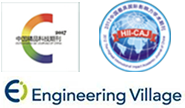



 下载:
下载:










